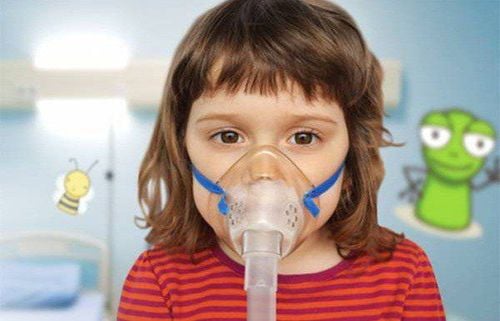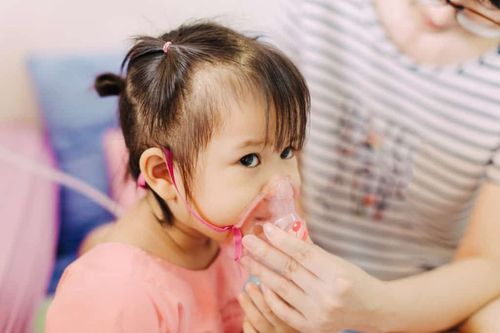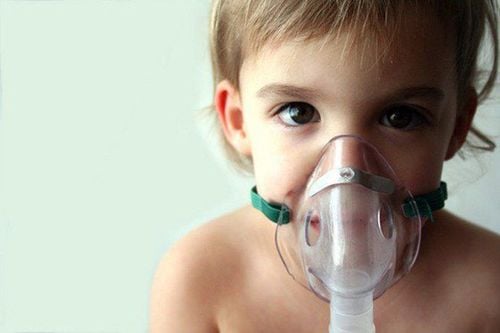This is an automatically translated article.
The article was professionally consulted by MSc Nguyen Cong Canh, Head of Pediatrics - Neonatology Department, Vinmec International General Hospital Da Nang.Respiratory tract infection is a common disease in children that causes the nose, pharynx, and throat of the child to swell and produce viscous sputum. If not supported to remove and expel, viscous sputum will stagnate, causing infection, causing children to refuse to eat, vomiting, difficulty breathing, wheezing with symptoms of cough and fever. According to research, more than 30-40% of children have at least one respiratory infection in their life.
Currently, respiratory physiotherapy, also known as the technique of vibrating and loosening phlegm, is one of the most effective methods of treating respiratory infections. Let's learn more about the technique of vibrating and loosen phlegm with Vinmec in the article below.
1. What is phlegm fluttering?
Is a physical method, either manually by the technician, or with an instrument, or both to help improve the efficiency of breathing, help the lungs to expand better, strengthen the respiratory muscles, and eliminate , eliminating secretions, viscous sputum from the respiratory tract. Vibration and expectoration relies on the physical properties of the gas to change the pressure in the airways, and according to the baby's breathing rhythm to loosen the mucus and clear the airways. This method is applied in a number of respiratory diseases such as:
Nasal congestion Inflammation of bronchioles Inflammation of the lobes of the lungs Respiratory diseases that cause children to stagnate viscous sputum, obstructing the airways Chronic diseases causing stagnation of viscous sputum such as cerebral palsy, neuromuscular diseases, some chronic respiratory diseases,... Lung collapse due to sputum sputum After surgery, especially thoracic surgery. This method helps open the airways, making breathing easier, reducing wheezing and reducing vomiting. At the same time, this method helps to release viscous sputum stagnant in the trachea and bronchi, making it more comfortable and breastfeeding and eating will be better.
2. 4 steps in 1 time performing pulsing to loosen phlegm
Time to perform pulsation and expectoration in each treatment is about 10-15 minutes. However, depending on the child's medical condition, the doctor will specify the number of times to perform treatment.
Parents should let the baby fast for about two hours before performing the technique, should aerosolize the child before coming to thin the sputum and make it easier to expel. After performing this technique, parents should hug and comfort the baby to reduce crying, reduce tolerance, can give the baby warm water to drink, and after 10 years of practice, they can breastfeed and eat.
Depending on the baby's medical condition, the doctor will specify the number of times to perform treatment for the baby. Normally, the time to perform sputum vibration for babies is about 10-15 minutes each time with 4 steps:
Clear the nose and throat Place the child on his side on the table, the mother stands at the child's feet, holding the baby's hands. Physiotherapy technicians let the child lie on his or her head to one side, use physiological saline (sodium chloride 0.9%) to pump it into the upper nostril, creating a continuous flow from the upper nasal cavity to the lower nasal cavity. to dilute the viscous sputum to easily bring the viscous sputum and bring the secretions out through the lower nasal cavity. Blow your nose Helps expel viscous sputum in the nasal area - on the pharynx out. It is done by closing the upper nostril and using the index finger to close the child's mouth so that the sputum will be expelled out the lower nostril, wipe it with soft paper, continue to pump saline and blow the nose until it is no longer visible. nasal discharge. Blocking the base of the tongue Helps push phlegm from the oropharynx out of the mouth. Place the child on his or her back, inhale with one finger to cover one nostril, and at the same time use the other hand to block the corner of the tongue so that the child inhales phlegm into the mouth. Do the same with the other nostril. When observing that the child is about to exhale, the technician puts the thumb under the base of the tongue and then gently moves the thumb to bring the mucus and secretions from the oropharynx out of the mouth by the force of the air current. breathing out. Acceleration du Flux Expiratoire (AFE) is performed to expel viscous sputum remaining in the proximal airways such as the trachea and large bronchi. This technique creates a force that pushes the air in the lungs out at a speed close to the speed of a cough. The technician places one hand on the last rib and the other on the child's chest. When the child begins to exhale, the technician will apply gentle force until the child is almost finished exhaling. The above action will be performed 5 times, then will stimulate coughing to expel viscous sputum. into the nose. The manipulations of the technique performed with the above 4 steps do not hurt the child at all. However, it is the baby's crying reflex that makes it easier to expel sputum, the louder the baby cries, the faster and more viscous sputum is pushed out. If the baby cries more, it is likely that the airway is constricted, at this time the technician and parents will pat the child to make the child feel more comfortable and easy to perform the technique.
3. Should parents perform pulsation at home for children?
Parents should absolutely not perform the sputum vibrating technique at home. This method should only be performed under the direction of a doctor and by highly trained technicians. Some things parents can do at home to help their baby recover quickly:
Drop the nose with saline Physiological for children 4-5 times / day, especially before feeding or sleeping so that children sleep better and eat easier. Before instilling a nose in a child, parents should wash their hands. Only clean disposable tissues should be used to blow and wipe the child's nose; Avoid repeated use of baby wipes as there is a greater risk of infection. Give your child plenty of water to drink to thin the sputum. Eat small meals so that your child can digest them easily and not anorexic. When sleeping, let the child lie on his side, with a pillow higher than usual. Limit the use of mother's mouth to suck the nose for children because in the mother's oral cavity there are many disease-causing bacteria, should only be used in an emergency. When children have respiratory infections, children often cough or vomit, this is a natural reflex to expel foreign substances from the airways. At that time, parents should support the child to produce phlegm by patting the child's back. Absolutely do not give children cough suppressants without the prescription of a specialist because it will make the sputum thick, sticky and difficult to expel.
Some notes:
Vibration to loosen phlegm is a supportive treatment, not a cure for the cause. Synthesis and analysis of the results of many recent studies around the world show that respiratory physiotherapy does not change the course of two important and common causes of cough with phlegm in young children, pneumonia. and bronchiolitis without complications of atelectasis. For children with simple respiratory infections, including pneumonia, laryngitis, and bronchiolitis without complications due to stagnation of viscous sputum, it is not allowed to pat the child to loosen the phlegm. Children with respiratory disease do not always need respiratory physiotherapy, even in many cases children really have phlegm. For example, patients with asthma, should not always do physical therapy, even if it is also a productive cough. It is especially important to note that when a patient is having an asthma attack (usually with cough, chest tightness, wheezing, shortness of breath), physical therapy should not be practiced because it is ineffective and sometimes aggravates the condition. difficulty breathing in children. Therefore, children need to be examined by a specialist to be diagnosed, determine the exact cause and have appropriate and effective treatment.














